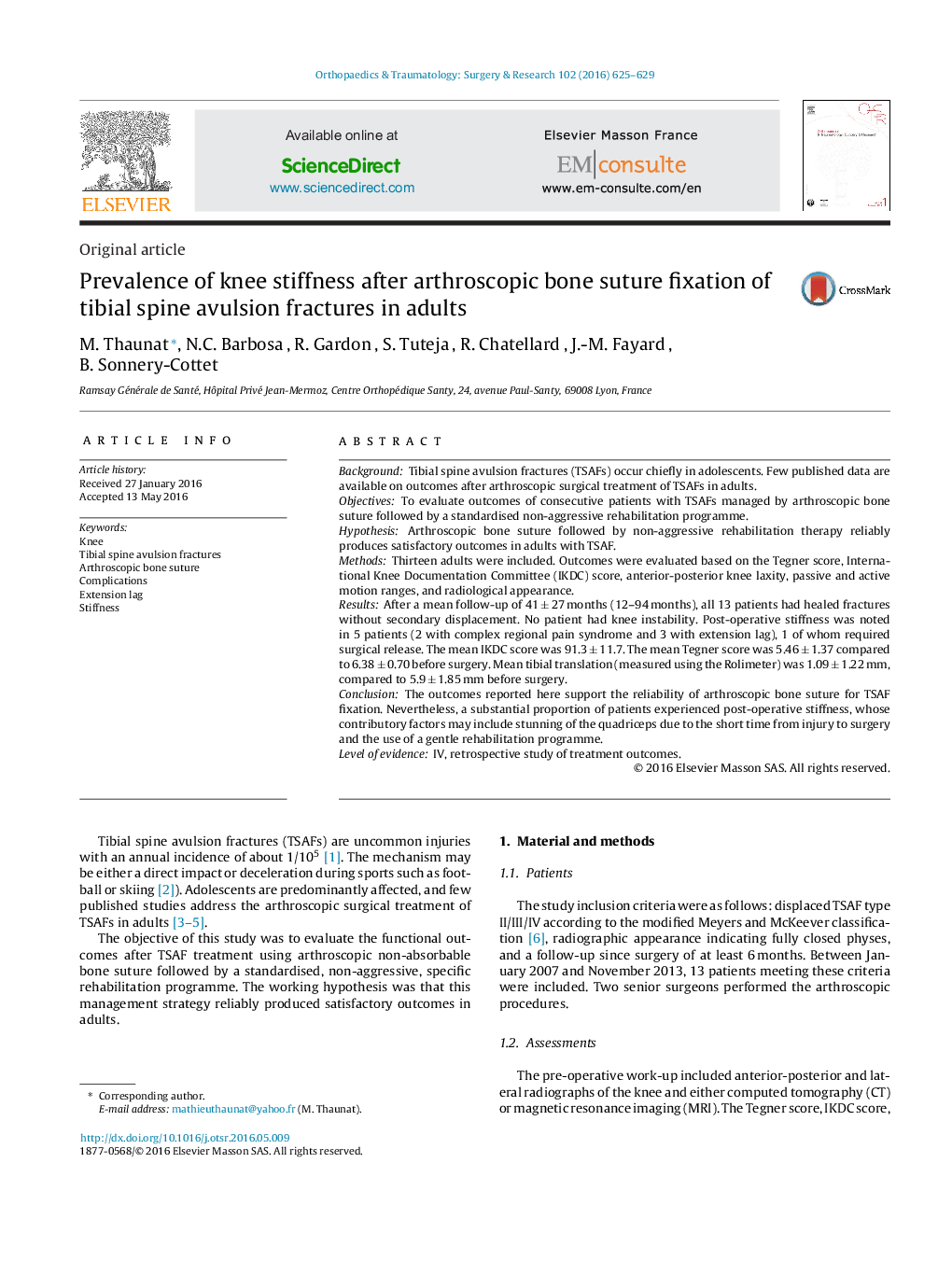| کد مقاله | کد نشریه | سال انتشار | مقاله انگلیسی | نسخه تمام متن |
|---|---|---|---|---|
| 4080796 | 1267567 | 2016 | 5 صفحه PDF | دانلود رایگان |
BackgroundTibial spine avulsion fractures (TSAFs) occur chiefly in adolescents. Few published data are available on outcomes after arthroscopic surgical treatment of TSAFs in adults.ObjectivesTo evaluate outcomes of consecutive patients with TSAFs managed by arthroscopic bone suture followed by a standardised non-aggressive rehabilitation programme.HypothesisArthroscopic bone suture followed by non-aggressive rehabilitation therapy reliably produces satisfactory outcomes in adults with TSAF.MethodsThirteen adults were included. Outcomes were evaluated based on the Tegner score, International Knee Documentation Committee (IKDC) score, anterior-posterior knee laxity, passive and active motion ranges, and radiological appearance.ResultsAfter a mean follow-up of 41 ± 27 months (12–94 months), all 13 patients had healed fractures without secondary displacement. No patient had knee instability. Post-operative stiffness was noted in 5 patients (2 with complex regional pain syndrome and 3 with extension lag), 1 of whom required surgical release. The mean IKDC score was 91.3 ± 11.7. The mean Tegner score was 5.46 ± 1.37 compared to 6.38 ± 0.70 before surgery. Mean tibial translation (measured using the Rolimeter) was 1.09 ± 1.22 mm, compared to 5.9 ± 1.85 mm before surgery.ConclusionThe outcomes reported here support the reliability of arthroscopic bone suture for TSAF fixation. Nevertheless, a substantial proportion of patients experienced post-operative stiffness, whose contributory factors may include stunning of the quadriceps due to the short time from injury to surgery and the use of a gentle rehabilitation programme.Level of evidenceIV, retrospective study of treatment outcomes.
Journal: Orthopaedics & Traumatology: Surgery & Research - Volume 102, Issue 5, September 2016, Pages 625–629
